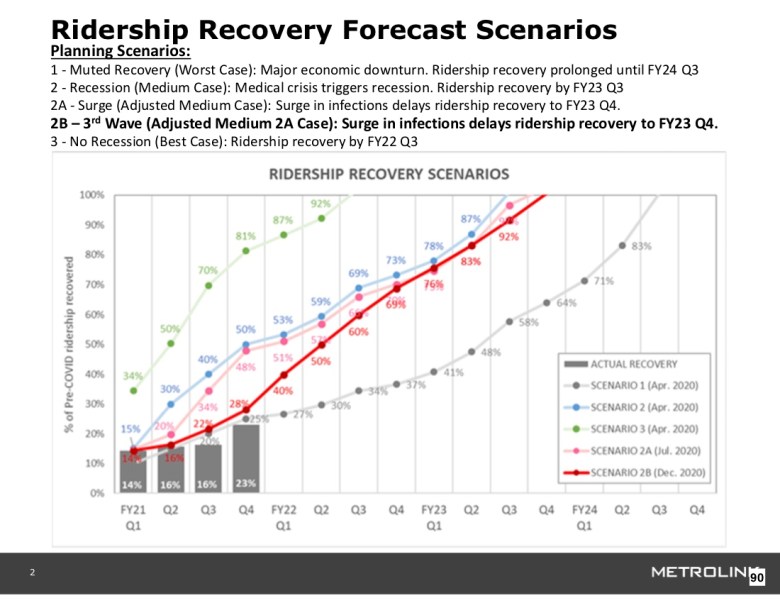For several years now, mesmerized locals have watched as the twin threats of high tides and onshore swells increasingly bombard the San Clemente shoreline, overtopping tracks and not infrequently, slamming against passing trains. OCTA’s recent Climate Study identified this segment as subject to “high-volume overtopping” with risk of “significant sea level rise” by 2040. Unfortunately, serious trouble arrived 19 years earlier than expected, and most certainly, there will be more to come.
Soon after the September 16th suspension of passenger rail service between Laguna Niguel and Oceanside, Metrolink officials advised its Board that unstable bluffs had triggered dangerous ground movement, causing the single track to kink and shift 28.8 inches. Several Cypress Shores homes and the HOA parking lot were destabilized, along with the railroad track, wedged between cliffs and sea, directly below. A vertical drop of 16 inches was measured at the top of the slope. Repairs were swift and impressive. Unhindered by Coastal Commission hearings and the lengthy approval process inherent in most coastal development, dozens of freight trains transported carloads of rip rap boulders to the site, eventually covering the entire shoreline with over 11,000 tons of rock, obliterating the tiny beach below. Coastal rail travel resumed October 4th — and a narrow beach is gone.
Meanwhile, 40 miles south, Del Mar residents and city officials are enduring a massive project to stabilize coastal bluffs that collapsed last February, leaving the railroad tracks a mere 35 feet from the cliff’s edge. Work is underway to decapitate the natural bluff, install 18 steel support columns, and add dirt, concrete and 288 feet of sea wall along the base. Phases 5 and 6 of the stabilization are expected to cost $100 million. A long term plan to bore a tunnel under Del Mar homes to provide a safer alternative to the precarious bluff top tracks is expected to cost $3 billion or more.
From flooding in Newport Beach to the loss of most of the infrastructure at a popular park in Capistrano Beach and the south parking lot at Doheny State Park; calls for a $14 million sand replenishment project in San Clemente, and recent bluff failures in San Clemente and Del Mar; residents and public officials are starting to ask important questions:
- How far are we willing to go to preserve coastal rail adjacent to rising seas and a seriously eroding coast?
- How much are we willing to sacrifice in terms of coastal access and the environmental and economic impacts of hard armoring that experts warn will further exacerbate erosion?
- How much cost, disruption and economic pain is the public willing to swallow to preserve passenger rail service with pathetically low ridership south of Irvine and freight service that represents only .5% of all freight in San Diego County?
Perhaps the ultimate question is this: How many rip rap boulders, caissons and seawalls will it take to hold back the Pacific Ocean along this fragile, precious coast?
Ironically, locals are already seeing the deleterious effects of hard armoring at Cyprus Shores. Many swear the waves are higher than ever as swells slam against the hard, high rock face, crashing down to gouge more sand from the endangered shoreline. As coastal engineers predicted, the band-aid of hard armoring is actually exacerbating the situation and causing further erosion.

Metrolink/OCTA and BNSF/NCTD’s plans to add billions in infrastructure for major expansion of freight and passenger service along a coastal route with a looming expiration date, seems at best, wasteful and at worst, sheer folly. The expansion of passenger freight seems entirely inappropriate in view of Metrolink projections showing actual ridership recovery that is currently below the agency’s “worst case scenario”, and workforce projections that show a decrease or minuscule increase in potential commuter demand between now and 2047 in most of Orange County. In the struggle between railroad hubris and sea level rise/climate change, my money’s on Mother Nature.
Let’s start looking at serious alternatives to coastal rail – now.

Toni Nelson is a retired CPA and founder of non-profit community organization Capo Cares, an advocacy group for the community of Capistrano Beach in the City of Dana Point. Since 2014, Capo Cares has followed issues of interest to community members, such as coastal erosion, beautification, public health and safety, local politics and arts and cultural events. The group updates the community via periodic newsletters and daily postings at www.Facebook.com/capocares. Nelson writes frequently on topics related to coastal erosion as a community contributor at www.patch.com/lagunaniguel-danapoint and can be contacted at capocares@gmail.com
Opinions expressed in community opinion pieces belong to the authors and not Voice of OC.
Voice of OC is interested in hearing different perspectives and voices. If you want to weigh in on this issue or others please email opinions@voiceofoc.org.
"many" - Google News
November 15, 2021 at 04:12PM
https://ift.tt/3FiQpMY
Nelson: How Many Rocks Will it Take to Hold Back the Pacific? - Voice of OC
"many" - Google News
https://ift.tt/2OYUfnl
https://ift.tt/3f9EULr
No comments:
Post a Comment